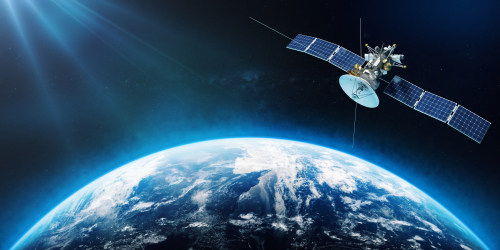Greece (Brussels Morning) Japan launched a lunar exploration spacecraft on the 07th of September aiming to become the world’s fifth country to land on the moon after India. According to the Japan Aerospace Exploration Agency (JAXA), the rocket successfully launched the Smart Lander for Investigating Moon (SLIM) from Tanegashima Space Center in southern Japan.
Japan’s “moon sniper” mission intends to land the SLIM spacecraft only 100 meters from its intended target area on the lunar surface. After a lengthy, fuel-efficient approach trajectory, the $100 million mission is anticipated to begin the landing by February. JAXA was also involved in astronomical research, having launched missions such as the Subaru Telescope and the Suzaku X-ray astronomy satellite. These missions help us understand the universe better.
SLIM is programmed to land on near Mare Nectaris, a lunar sea that may be seen as a dark dot from Earth. Testing cutting-edge optical and image processing technology is its main objective. H-IIA rocket also carried the X-Ray Imaging and Spectroscopy Mission (XRISM) satellite, a joint project of JAXA, NASA and the European Space Agency. The satellite aims to observe plasma winds flowing through the universe that scientists see as key to helping understand the evolution of stars and galaxies.
An Exploration Agency
Peaceful space activities and international cooperation are central to Japan’s space strategy. The government has signed the Outer Space Treaty and is actively involved in discussions about space governance and sustainability. The country’s space program has made important contributions to space exploration and scientific research through technological advancements and international cooperation, and it continues to play a key position in the global space community.
The space program began in the 1960s with the establishment of the Institute of Space and Astronautical Science (ISAS). In 2003, ISAS combined with two other entities to establish JAXA. JAXA has since played an important role in both domestic and international space activities. The country works closely with foreign space organizations such as NASA, ESA (European Space Agency), and in the past with Roscosmos. This partnership is visible in programs such as the International Space Station, where Japan’s Kibo module is an essential component.
JAXA manages a number of Earth-observing satellites that track climate change, natural disasters, and environmental conditions. Such satellites are the Global Change Observation Mission – Climate (GCOM-C) and the Advanced Land Observing Satellite (ALOS). The Agency has created a plethora of spacecraft and satellites for a variety of goals, including Earth observation, planetary exploration, and scientific research. The Hayabusa series, which successfully collected samples from asteroids, and the Kibo module on the International Space Station (ISS) are two notable missions and satellites.
Japan has been an active participant in planetary exploration. For example, the Hayabusa and Hayabusa2 missions retrieved samples from the asteroids Itokawa and Ryugu, respectively, and returned them to Earth for study. These missions have supplied important information about the early solar system.
Future Endeavors
Commercial space enterprises and startups have grown in Japan, contributing to the development of the country’s private space economy. Space exploration ambitions remain high. The MMX (Martian Moons eXploration) mission will examine Mars’ moons Phobos and Deimos, as well as the SPICA (Space Infrared Telescope for Cosmology and Astrophysics) mission for deep space investigations.
Japan wants to stop heavily relying on the US because it will eventually lose its ability to develop its own key technology in the space sector and become a subordinate of Washington. Meanwhile, the US Space Force’s intention to establish a new command post in Japan may fuel the space competition with China. The Japanese command post will be the third in the Indo-Pacific region, following locations in Hawaii and South Korea that launched last year.
“These two space command centres [in South Korea and Japan] that take care of US intelligence, communication and position satellites are not only aimed at China’s most powerful strategic weapons, such intercontinental ballistic missiles and anti-satellite systems, but also help interfere with the joint operations of the PLA’s missile force, navy, air force and strategic support force,” said Ni Lexiong, a professor at Shanghai University of Political Science and Law.The US and Japan share a military security Treaty and both Defence Chiefs of Staff stated back in January that attacks “to, from, and within” space could trigger Article 5 of their security pact, which specifies that an attack on one of the allies is an attack on both, sending a message to Beijing.



